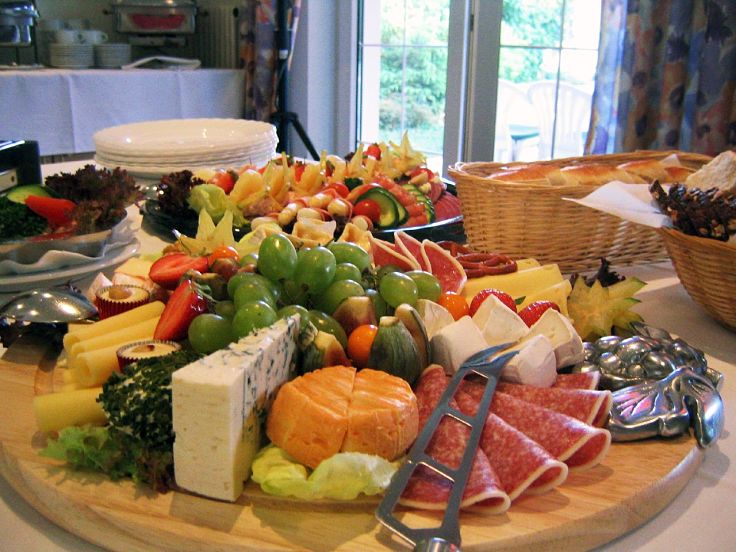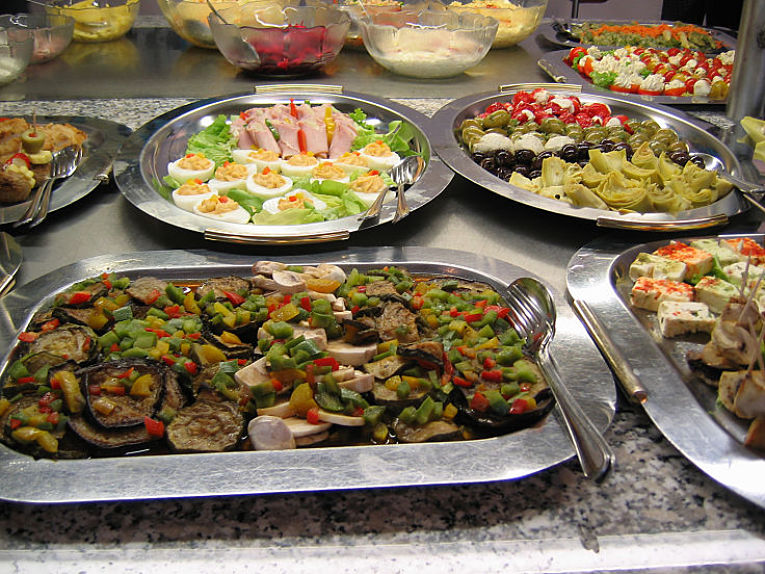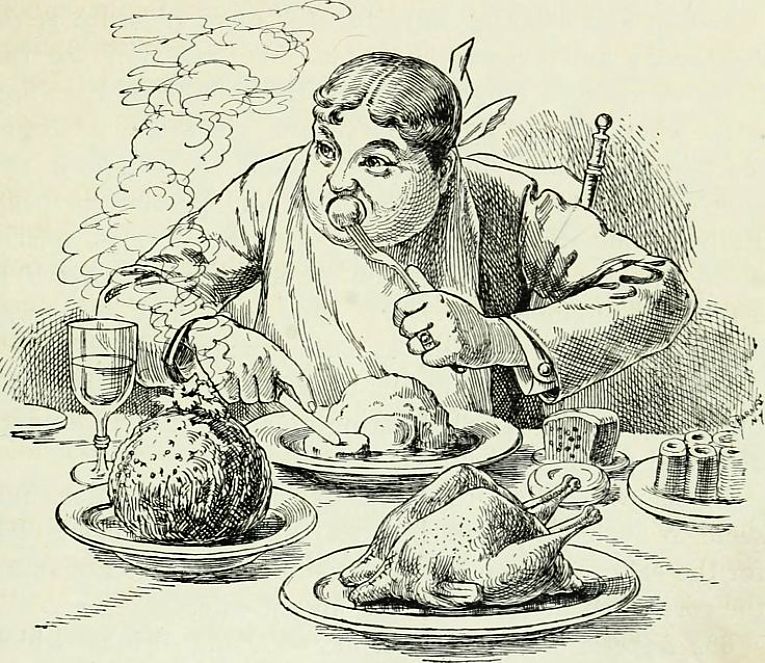How to Curb Appetite, Suppress Hunger, Stop Mood Triggered Eating
It is not widely known that our appetites, hunger pangs and how much we eat to feel satiated after a meal has a mental as well as a physical component. It is true that ‘You are what you Eat’ but you are also ‘What you thought you ate.’
How hungry you feel depends on your mood and senses as well the physical signal generated within our bodies.
How much you eat at a meal with friends also depends on how much your friends eat at the same meal. Further our sense of being satiated depends on how much we think we ate, not how much we actually ate.
Sounds complicated, but understanding how the mind can affect the appetite and our sense of being satiated after a meal is extremely important for any weight loss program.
There is ‘no gain without pain’, but for people trying to lose weight it is more a matter of ‘no loss without hunger pain.’ The concept of ‘comfort foods’ and needing a sugar hit when we are feeling low are also realities that we need to deal with.
Being able to curb the appetite, suppress hunger and control the feeling of satiation so we can fell satisfied with smaller meal portions are crucial for successful weight loss strategies. This article discusses the latest research on these matters.
Hunger Depends on How Much We Think We Have Eaten
A recent study by a team at the University of Bristol, found that our sense of being satiated depends more on how much we think we ate, rather than how much we actually ate. In a rather sneaky trial they rigged soup bowls of different sizes so that they could adjust the amount of soup they contained as subjects ate from them. The 100 adult participants were divided into two groups. One group were given a small (300 ml) capacity soup bowl and the other a much larger soup bowl (500 ml). They were then presented with a bowl of creamed tomato soup for lunch, and were instructed to consume all the soup. Using the hidden tubes fitted to the base, the amount of soup in the smaller bowls could be increased as the person ate the soup, so they actually ate 500 ml of soup from the smaller bowl. Similarly the amount of soup in the larger bowl could be reduced to only 300 ml as the soup was eaten.
As expected, immediately after the meal, those who had consumed a 500 ml bowl of soup reported being more satiated, whether they were aware of it or not.
But, after 2-3 hours the subjects who sat down to eat from the larger 500 ml bowls reported greater satiety and less hunger, than those who ate from the smaller 300 ml bowl, regardless of the actual amount of soup they actually ate. Their perception of how much they ate overrode the physical response from the amount they ate.
Why Willpower and Attempts to Monitor Consumption Often Fail
People are often surprised at how much they consume when they are told about it. This makes willpower very ineffective and attempts to have people monitor what they eat. Most people grossly underestimate their consumption. This means it is necessary to resort to various environmental controls such as smaller plates to reduce portion sizes. Eating half the food on a plate is much more difficult than eating everything that is on a half size plate. For some people this may involve strategies such as:
- repackaging bulk food into single serve containers
- storing tempting foods in less-convenient locations
- plating modest amounts of food prior to beginning a meal
- allowing no refills
- using narrow glasses
- using smaller plates
What and How Much Companions Eat, Affects What We Eat
Numerous previous research studies have shown that people modify the amount they eat according to the amount that their eating companions (their chums) eat.
People tend to eat less when others eat less, and are more restrained and eat more when others eat more.
A recent study investigated whether a form of mimicry may be involved. Perhaps both people eating together becomes synchronized through a mimicry process. The results showed that young females generally mimicked each other's eating pattern. That is when one person ate, the other person also ate. Perceiving the eating companion taking a bite appears to activate the companion’s tendency for the same movement and eat at the same time and to follow a similar eating pattern.
Effects of Sensory Perception of Foods on Appetite and Food Intake
It is known from other studies that most people don't eat purely for survival, but for pleasure, palatability and according to mood swings. This can profoundly affect the amount eaten. A recent review has examined the scientific evidence. The key points were:
- All reviewed studies showed that the amount eaten increased as palatability increased.
- Whether palatability has an effect on appetite, after eating a meal, for subsequent meals was not clearly established.
- Taste, smell, texture and appearance all affect satiety
- Various studies have demonstrated that increasing the variety of food can increase both the intake of food and energy consumption.
- The role of sweet taste itself, in appetite regulation, is not fully established. Some studies show a stimulating effect, but many other studies did not show an effect of sweet taste on food intake or appetite.
- People are often surprised at how much they consume when it is monitored for them. This indicates that their perception of how much they eat is relatively poor.
- It is well established that the size of a food package can increase consumption.
- Similarly, it is well established that the size of portion or servings in kitchens and in restaurants affects consumption. When packages sizes are doubled the amount consumed often increased by 25% for meals such spaghetti, and about 45% for many snack type foods. These increases in consumption for larger portions sized applied even when the energy density of the food was altered. It applied for high cal and high fat foods.
- The general reason why large packages and bigger portions increase consumption, may simply be that they are regarded as “normal” or “appropriate” amount to consume. People tend to passively consume what is given to them. For example, people tend to consume more from half-empty, large packages, than they do from full, medium-sized packages, even when the volumes in the packages are the same. Larger plates or packages provide the opportunity for people to overeat, when they might have stopped eating if they were given a smaller, but still unconstrained, amount of food.
- What is perhaps surprising is that package and portion size can even increase the consumption of unfavorable foods. For example, when people were given a large-size or medium-size portion of stale popcorn, they still ate a third more stale popcorn from the larger buckets.
- It appears that social and environmental cues and portion sizes, could be more powerful drivers than the taste of food itself.
- In effect, the volume of food eaten tends to be a better indicator of how full individuals report they feel than does the calorie density of the food.
Suggestions for Using this Information to Help Reduce Food Consumption
The research findings have led to a number of suggestions for how to control food intake.
Eating effort: Making Food Harder to Get and Decreasing availability
- Store tempting foods in less-convenient places
- Do not leave platters and serving bowls on the dinner table.
- Keep second serving options at a safe distance away.
The Eating Environment: The Atmosphere and Where you Eat influences Eating Duration. You can control this in a number of ways
- Before starting a meal, have the bread basket and side dishes removed.
- Don’t expand the menu with extras.
- Although candlelight and soft music and can increase the enjoyment of a meal, it is known to cause overeating. Instead of eating dessert or second helpings, enjoy a cup of coffee in the pleasant atmosphere without having to keep eating. Have left-overs removed quickly to eliminate the temptation.
Eating with others: Socializing affects meal duration and consumption norms
- Make a conscious decision on how much you are going to eat prior to the meal not during it.
- Order smaller quantities (for example - half-size portions) to stop the tendency to keep pace with your companions during the meal.
- Mimic the eating patterns of another person in the group that appears to be eating less food and at a slower pace.
Eating With Distractions: Distractions can obscure, initiate and extend food consumption
- Discourage grazing by focusing your food intake to the main meal itself.
- Try to eat only when sitting down, and avoid distractions.
- Pre-serve the portions or meals when eating with distractions, such as watching televisions and don’t allow refills, bread or calorie rich side-dishes
Replace Junk Foods with Healthier Alternatives
- Eliminate cookie jars and plates of nuts and sweet. Replace them with a bowl of fruit.
- Wrap tempting foods in foil so that they are less visible, require unwrapping and are less accessible.
- Position healthier, low-calorie density foods in the front part of the refrigerator. Place the less healthy foods in the back and on the top shelf where they will be less visible.
Structure and variety of food: Greater Food Variety Drives Over-Consumption
- Avoid having multiple bowls of identical foods on display as this makes it appears that there is more variety and encourages over eating.
- Avoid serving a huge variety of different foods on plates at the same time.
- Arrange foods into organized patterns that avoid variety and encourages people to choose one option rather than multiple ones.
Size of food portions and package sizes: Discourage large sizes as the norms
- Repackage foods and servings into smaller containers to promote small-size norms
- Serve smaller dinner portions in advance on smaller plates.
- Never eat from packages. Always serve the food from a package to a plate or bowl to ensure you control portion sizes.
Stockpiling of food: Stockpiled food is quickly consumed
- Out of sight is out of mind. So make foods less visible by storing bulk items in cupboards and moving them there immediately after they are purchased.
- Don’t store high fat and high calorie foods in your pantry. Only buy them as you need them.
- Reduce the convenience and bulk of stored bulk foods by packaging them into portions or freezing them in small containers.
Serving Container Sizes: Choose Serving Containers that are Wide or Create the Illusion that they are Larger.
- Replace short wide glasses with tall narrow ones.
- Reduce serving sizes using smaller plates and bowls.
- Use food presentation techniques that make the food appear larger.
- Use smaller serving spoons rather than larger ones.





